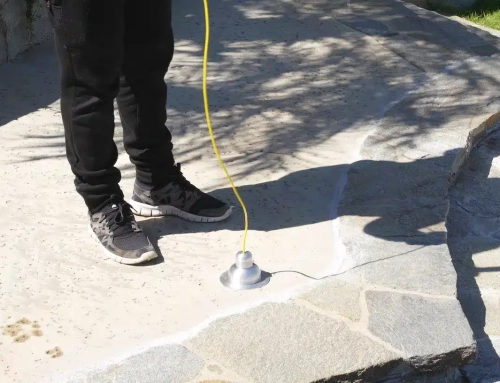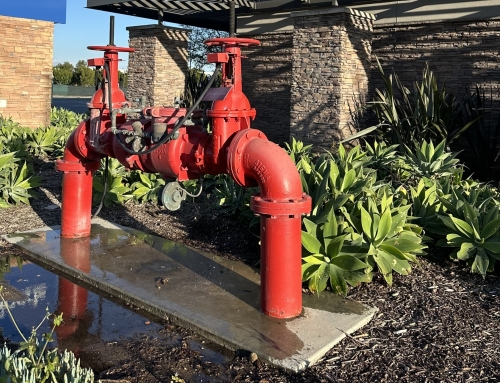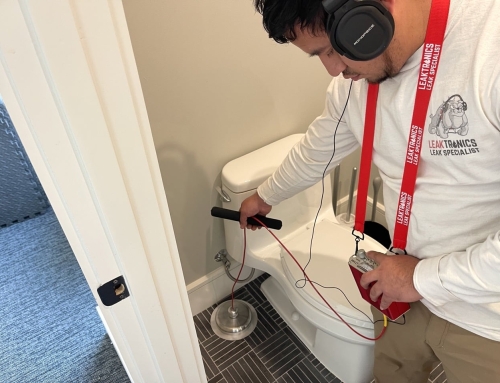In our training course, we discuss how the customer is going to tell you their story of the leak, but it’s always changing. A husband, a wife, a pool service guy and whomever else you talk about the pool with all have different stories about the pool, the leak and the way it needs to be repaired. Knowing when to walk away for a job is also part of running a professional leak detection company.
Take in 50% of the information and throw the rest out of your head. You’ll hear how water has dropped five inches, keep that in mind, but just know that their pool is losing water, regardless of their measurements. They might mention repairs having been done, keep it in mind, but when they tell you repairs we’re on the sprinkler system … the idea is, don’t focus on what they tell you, focus on the factual data you discover during the leak detection. You can get caught up chasing your tail if you follow every piece of information a customer introduces. Unless that customer is a professional pool builder and can verify where they made an error and they just want you to back it up – know that only your results will ultimately explain the water loss and areas in need of repair.
Still, when you do meet your customers, there are other factors that make walking away from a job a reality. The first one is that the customer has logs, charts and spreadsheets on the water loss; a month of observations and a printed workbook of correlation between day one, today and every day in between. This isn’t a customer you want, and the job you perform will never be good enough. It’s likely they’ll be over your shoulder, trying to inject their personal opinion into your work every step of the way and it simply won’t be comfortable. They don’t want your results, they want you to back up what their results are, even if they aren’t telling the whole story. You’re there to find the truth about the leak, not to confirm their misunderstandings of why the pool is losing water. Walk away.
If you find out that you’re the 3rd leak detection technician to get on the pool, question why. Maybe reach out to a previous technician and ask them why they walked away from the job. Keep in mind that some people have nothing better to do than misunderstand what it is you offer as a service, and if they don’t hear the results they want, they’re just going to call someone else. You’ll be wasting valuable time that could be better spent servicing another customer’s pool and getting paid. Walk away.
If you’ve discussed the leak detection process with a customer, explained that the pool needs to be filled and clean and scheduled a date of arrival – you would expect that the pool will be filled and reasonably clear when you arrive. If you get to a pool that has green algae, is half filled or doesn’t meet the necessary criteria to perform the job on the spot – walk away. Again, your time is valuable, and a customer needs to understand that miracles don’t just happen when you arrive. The time it takes to fill a pool and get the water clear enough to do your job isn’t going to happen in 15 minutes of your arrival. The customer who has no consideration for the work you do will be the same customer you’re chasing around for months trying to get paid. Walk away. Kn owing when to walk away from the job will spare you hours, even days of struggle just to get paid.

It’s hard to see a potential paid job disappear, but the time spent trying to do the job right can cost a whole lot more than the amount of money you’re getting paid for the job. Weigh the balance and be prepared to let a job go and move on. Remember, your work is performed to find leaks fast and accurately, not to appease a customer who knows the problem already and just wants you to back them up.
Learn more about LeakTronics Leak Detection Training, that includes a segment on customer psychology and making the best decisions to keep you working. Call 818-436-2953 for any more information.






